People
Sorry, Art Lovers: The New Auguste Rodin Biopic Is a Steamy, Superficial Flop
Never penetrating far into his psychology, the film by Jacques Doillon portrays Rodin as a pair of hands, always in action—and not much else.
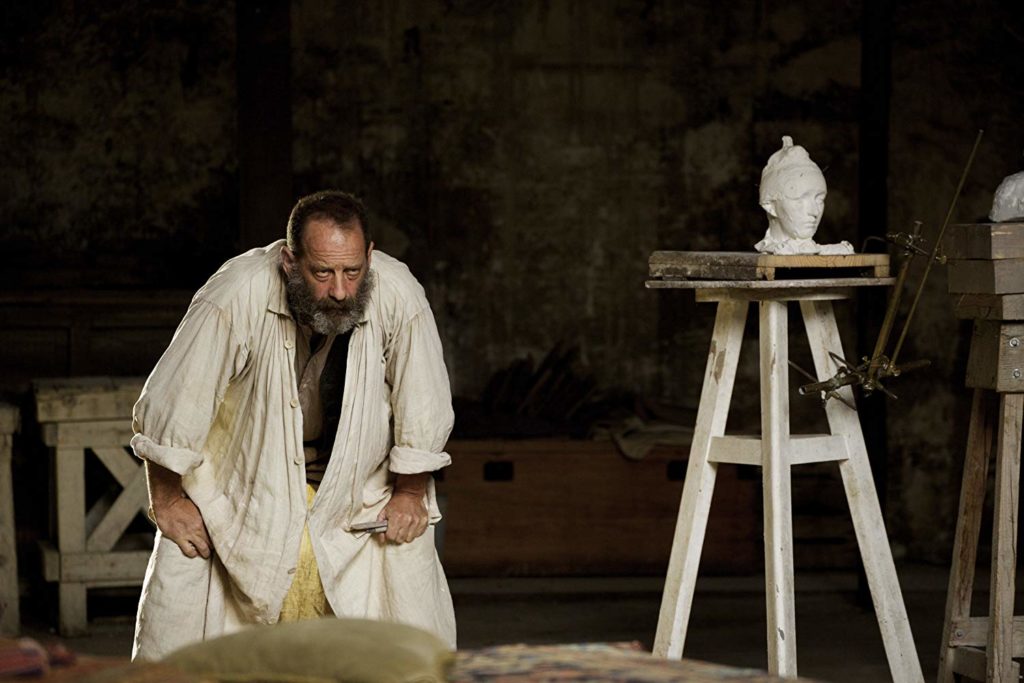
Never penetrating far into his psychology, the film by Jacques Doillon portrays Rodin as a pair of hands, always in action—and not much else.

Rachel Corbett

In the opening scene of French filmmaker Jacques Doillon’s recent biopic Rodin, two studio assistants carry a selection of plaster body parts, seemingly feminine, on a table big enough for a banquet and set it in front of the titular sculptor. This, symbolically, is an artist’s dinner, it seems to suggest—a cliche of carnal consumption which cycles relentlessly throughout the film.
Rodin was released in eight theaters in the US in June, where it earned less than $45,000. Still, it hit streaming services earlier this month, so it’s worth asking what kind of contribution it makes to the famed French artist’s legend. The answer, unfortunately, is that it’s probably better suited for fans of trashy romance than for fans of the Thinker.
Admittedly, Auguste Rodin isn’t an easy subject for a biopic. He wasn’t much of a diarist and he kept most of his business correspondence pragmatic and to the point, leaving his interior life largely open to the imagination. As a result, what we tend to see depicted of him is a caricature of the artist as a gruff and solitary genius, grabby with women and tormented by the gatekeepers who rejected him.
There’s truth in the broad outlines of that depiction, but it’s the same basic Rodin we’ve seen portrayed countless times, and to far superior effect than in Doillon’s Rodin.
Indeed, this film is really about the artist’s love affair with his ambitious assistant Camille Claudel, taking a well-trod topic better treated by the several earlier efforts already made on the subject, including the 2013 film Camille Claudel 1915, starring Juliette Binoche, and the 1988 film Camille Claudel, which has Isabel Adjani playing the long-suffering sculptress.
“I’m not sure I like modesty,” Rodin says to Claudel when they first meet, his hand suggestively kneading a lump of clay. And that, in one lamely pervy exchange, is the setup to one of history’s most infamous love affairs.
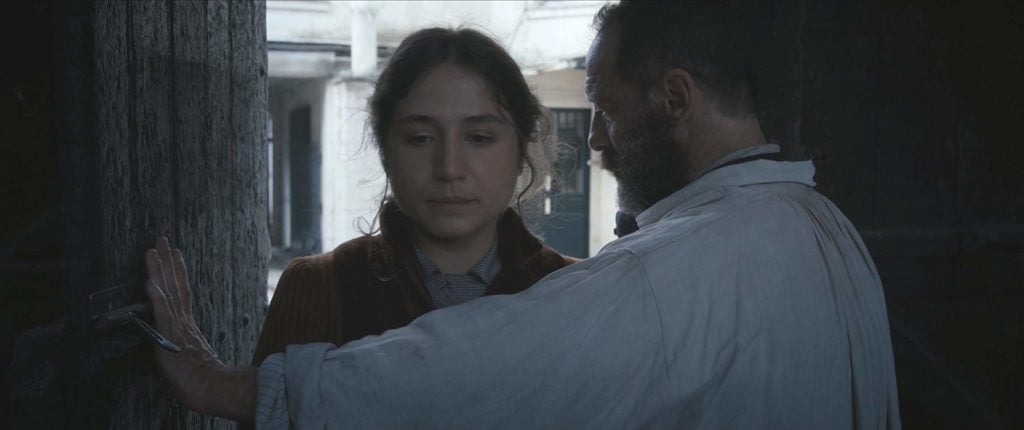
Camille Claudel (Izïa Higelin) and Auguste Rodin (Vincent Lindon). Image courtesy the film.
Beyond that, Doillon’s Rodin skims across its subject’s early rejections, his milestone commissions, and eventual career triumph with all the narrative grace of a bullet-pointed Wikipedia entry. Famous friends arbitrarily appear (there’s Monet for tea, Rilke at a cathedral) and the titles of Rodin’s best-known works are dutifully intoned for viewers, as if anyone showing up for this film might have forgotten that he’s famous for the Kiss, or Balzac, or the Gates of Hell.
Never penetrating far into his psychology, the film portrays Rodin as a pair of hands, always in action: pawing at a sculpture, groping a model. He molds both to his will, often leering at his female employees while massaging a mound of clay (yes, that device is used more than once). Women quiver, tremble, beg for kisses. Sometimes they orgasmically thank the artist for introducing them to heretofore unknown pleasures.
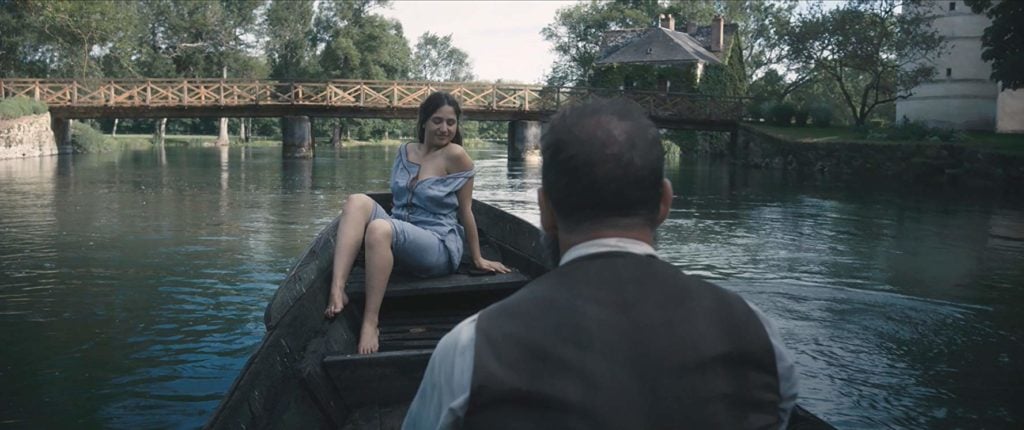
Izïa Higelin as Camille Claudel. (2017). Image courtesy the film.
To be fair, this isn’t entirely an exaggeration. Rodin did have well-documented sex appeal. The dancer Isadora Duncan once wrote of a steamy studio visit between the two:
“He began to knead my whole body as if it were clay, while from him emanated heat that scorched and melted me. My whole desire was to yield to him my entire being, and indeed I would have done so if it had not been that my absurd upbringing caused me to become frightened and I withdrew… What a pity! How often I have regretted this childish miscomprehension, which lost to me the divine chance of giving my virginity to the great God Pan himself, the mighty Rodin.”
But while the film’s many sex scenes seem intended to stir some passion into an otherwise dull stew, the results are often cringe-inducing. Rodin lived in an earlier era, but Doillon doesn’t, and his eye at times seems a little too closely identified with the randy Rodin’s. When the sculptor leaves a room where a model lies twisted into nude contortion, the camera stays behind to linger on her uncomfortably.
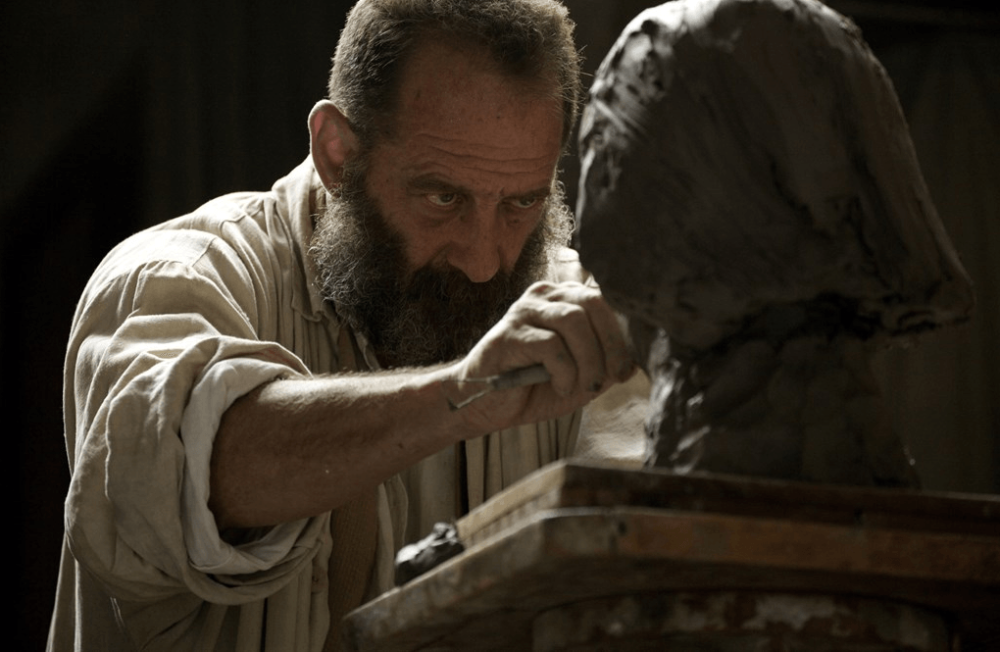
Vincent Lindon in Rodin. Film still courtesy of the film.
In another scene, we watch Rodin’s student Hilda and a nude model posing for her. Curiously, Hilda is sculpting only a bust, and thus would not seem to have needed a fully nude model. But that’s beside the point. The point of this scene is for Rodin to walk into the room so they can all have a threesome. Behind blurred glass, the women dance around Rodin declaring their desire to pay “homage to Carpeaux,” the artist who entwined figures for the sculpture La Danse.
While a director has a responsibility to keep some critical distance, an actor must embody his subject, flaws and all. And it must be said that Vincent Lindon’s Rodin successfully conveys a deep sadness.
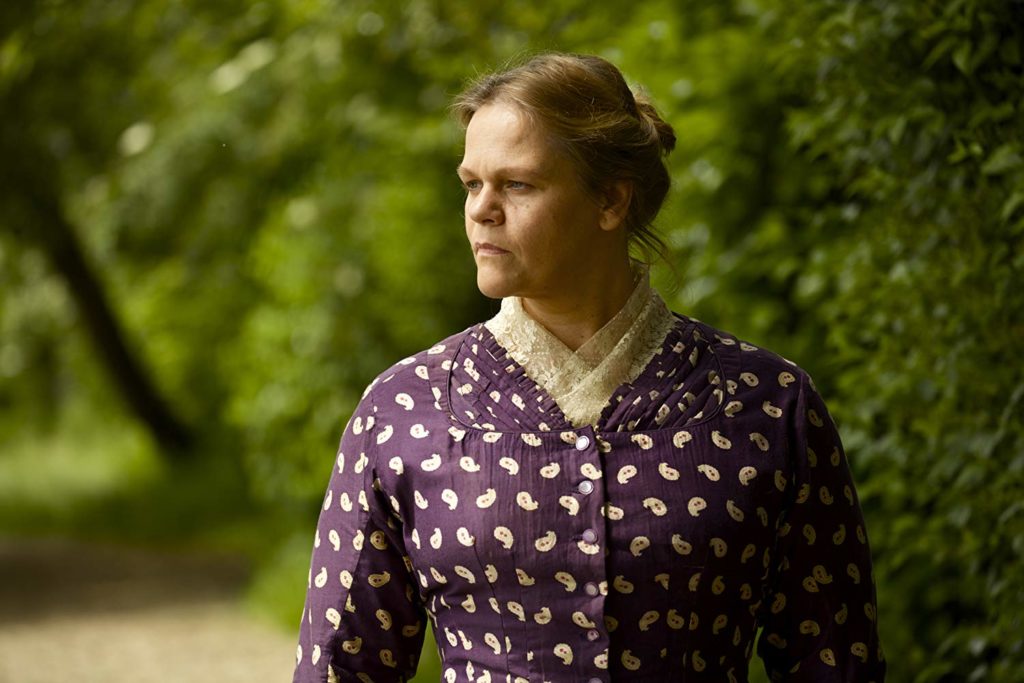
Séverine Caneele as Rose Beuret. Image courtesy the film.
But Rodin’s lifelong companion Rose Beuret is more depressingly played by Séverine Caneele. Beuret was an uneducated seamstress, but that doesn’t explain why she appears almost mentally disabled in this film, lumbering around the house clutching a baby doll. Is it meant as a substitute for a second child she wished she had in real life? It’s not clear. But it is creepy.
The film ends, strangely, with a scene of Rodin’s monument to Balzac standing in a Japanese open-air sculpture garden. We’re told that Rodin didn’t want to see his masterpiece locked up in a museum—so the outdoor location is meant to represent the triumph of his vision.
Of course, plenty of versions of Rodin’s Balzac are in fact housed in museums all over the world. No matter. A fittingly arbitrary ending to a wayward, tawdry but surprisingly passionless film.